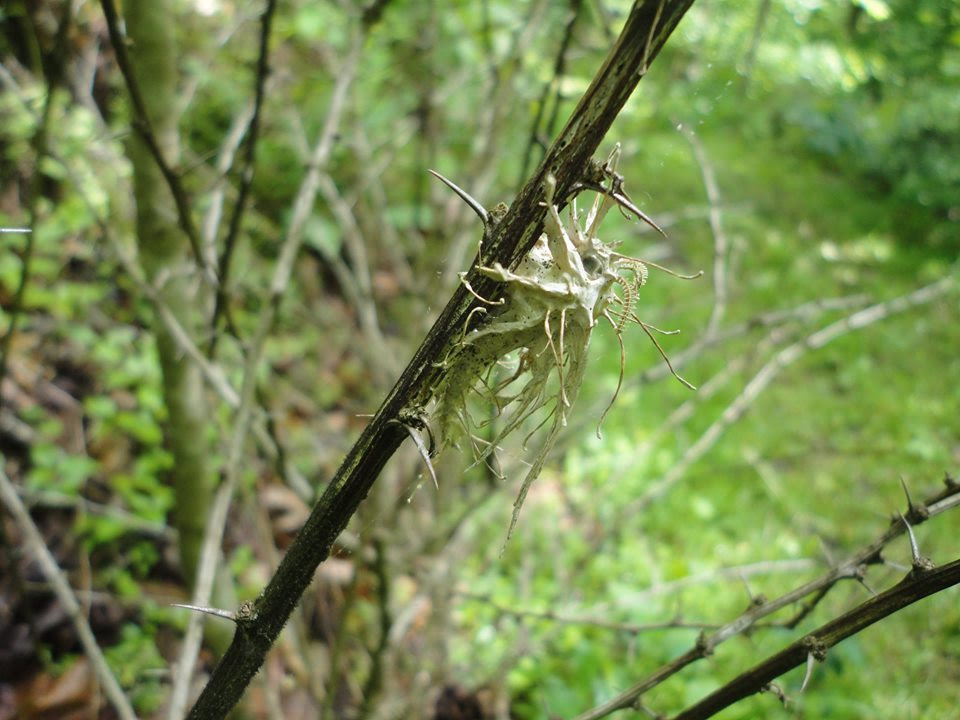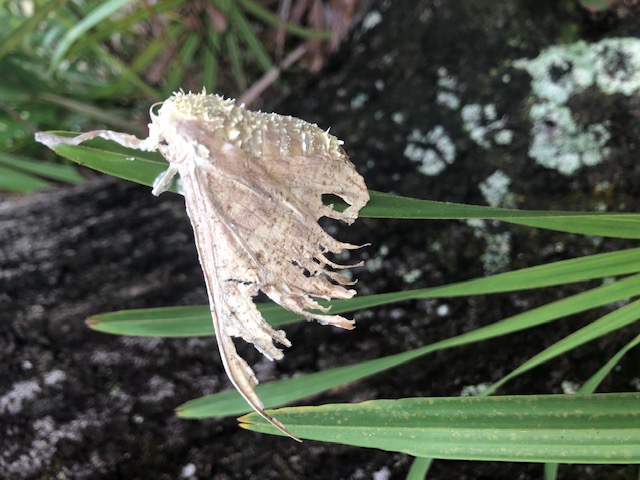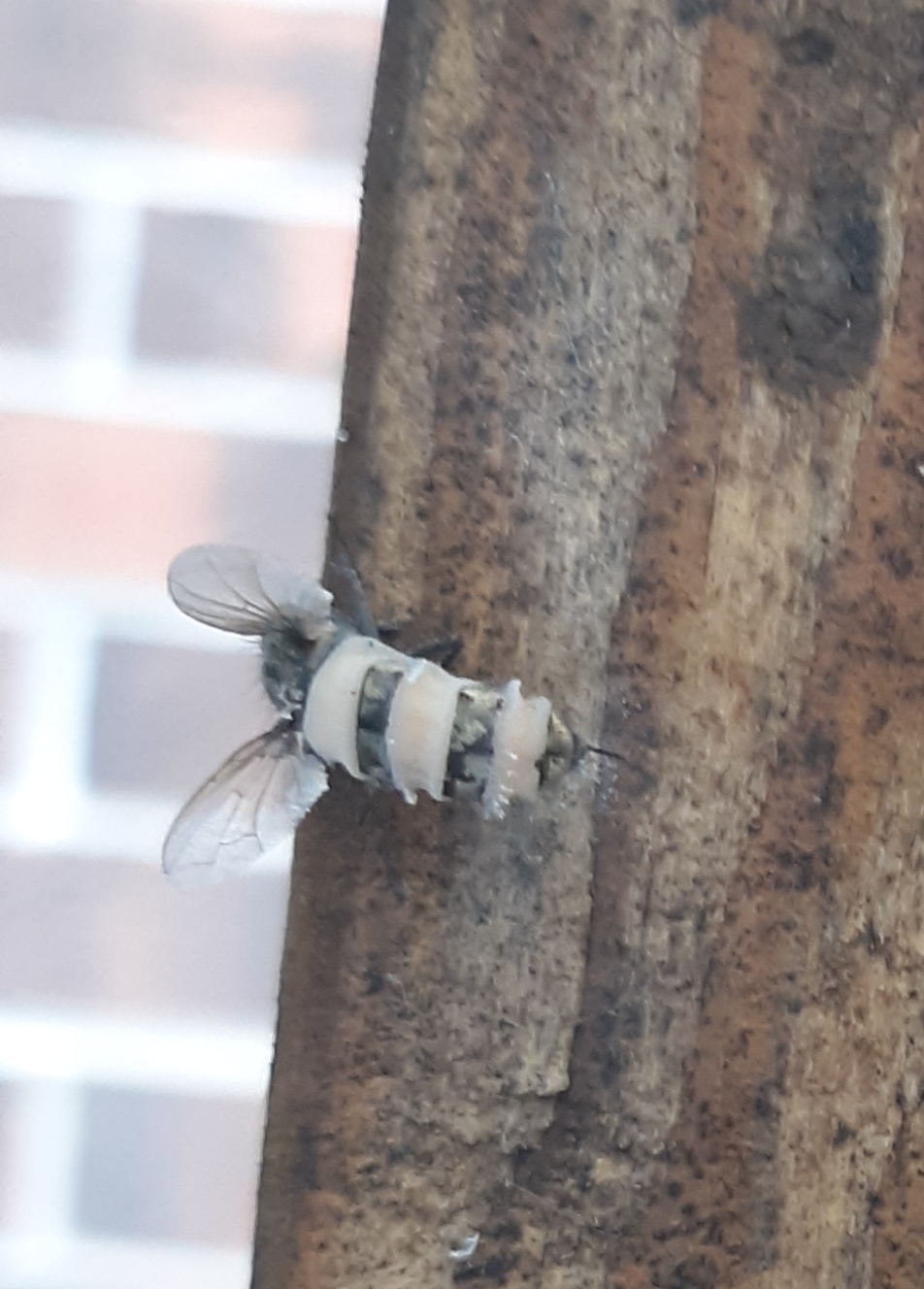Fungal Infections on Insects
About Insects | Digging Deeper
While many understand that insects have predators themselves, rarely does fungi come to mind when pondering what attacks bugs.
Many insects can be effective predators of pests that damage or destroy plants and trees that people use. Birds, mammals, and even other insects prey upon and are parasites of all sorts of insects. In the more microscopic world of fungi, certain kinds don't necessarily feed on dead insects. Instead they make use of living, mobile insects to spread their spores and reproduce. The result for the infected insect is almost always suffering and death. One type of fungus makes 'zombies' of ants and ghosts of moths. This fungus is called Ophiocordyceps (formerly known as Cordyceps) and it has many species.
One species of this fungus is well-known in South America for its effect on ants. After crossing paths with the spores, an ant is unable to stop them from attaching to its body and growing into it. The infection impacts the ant's behavior, causing it to climb to a height in an area with ideal growing conditions for the fungus. The term 'zombie ant' comes from this takeover of the ant. Upon reaching such a place, the ant bites down on a twig or underside of a leaf, and a type of 'lock-jaw' sets in, preventing it from releasing the leaf. It eventually dies, and afterward, the fungus grows an antennae-like projection from the ant's head where it is more likely have wind spread its spores to a larger area that can facilitate future infections and reproduction. The natural tendency for ants to travel in lines together means many individuals are infected at the same time, and large numbers of dead ants are often found very near each other in what entomologists call 'graveyards'.
Ophiocordyceps and other genera like it have been seen among insects in the U.S. The spores of one species is unwittingly eaten by a leaf-munching caterpillar. The fungus grows inside the caterpillar and creates a shell around its body. The caterpillar desiccates into a mummy-like remnant of itself. Once dead, the fungus grows a stem-like projection from the head of the caterpillar which helps spread the spores into the air and on the ground around it, where subsequent caterpillars will eat them and share the same fate.
Infected moths become white or yellow, and grow long tentacles or antennae-like stems all over their diminishing bodies. They look familiar and one may be able to tell they are moths, but the appearance is strange and the moths seem more like ghosts of their natural selves. The body of an infected moth is often found in the woods, where fungal spores are cast across the area making hosts out of other moths.
This method of parasitism seems cruel, but for the fungus, it is an advantageous way to make sure its own species continues to survive. Encounters with an insect infected by a fungus is uncommon, but we hope this helps explain that strange-looking insect.



